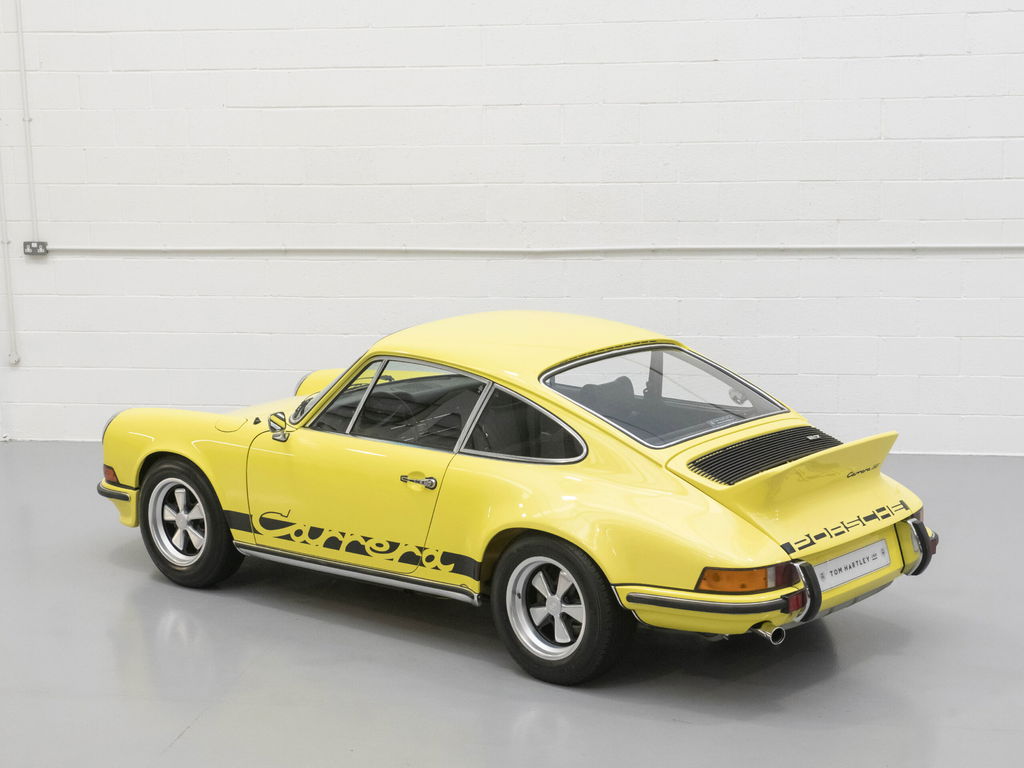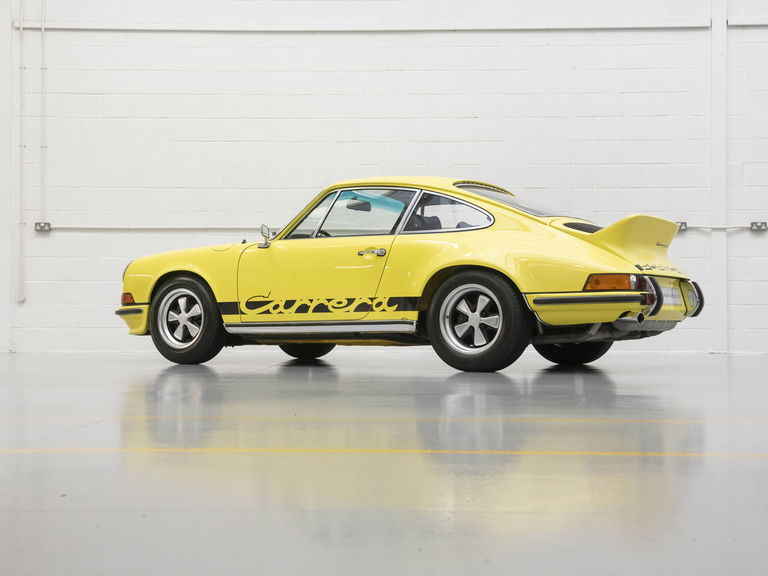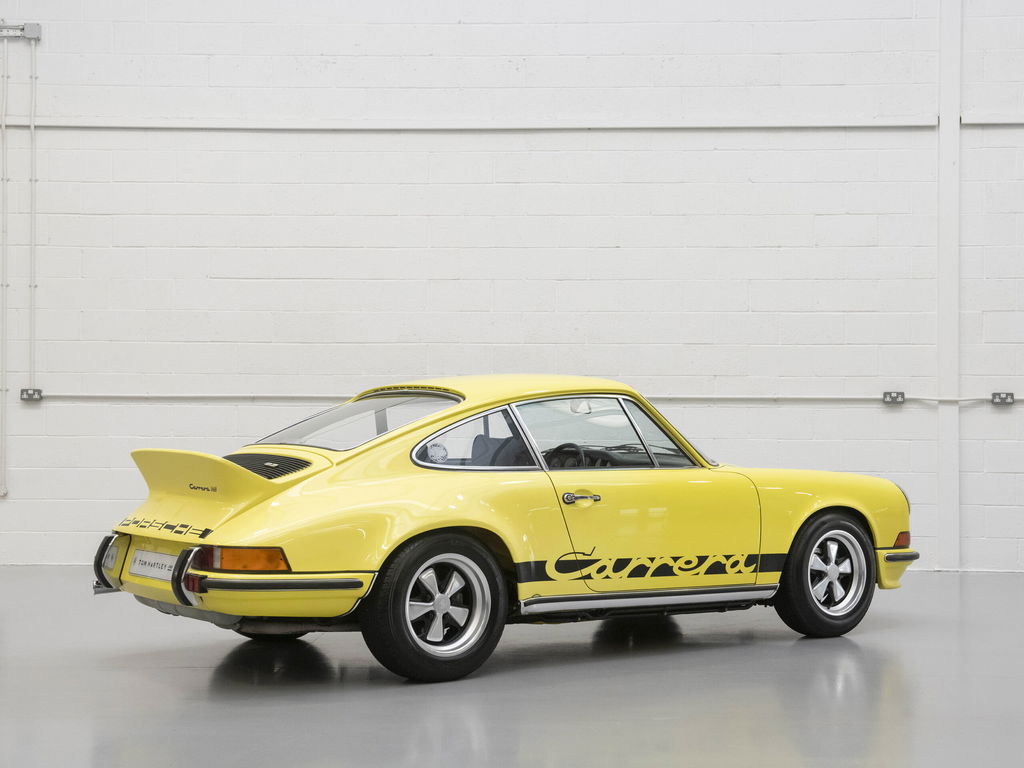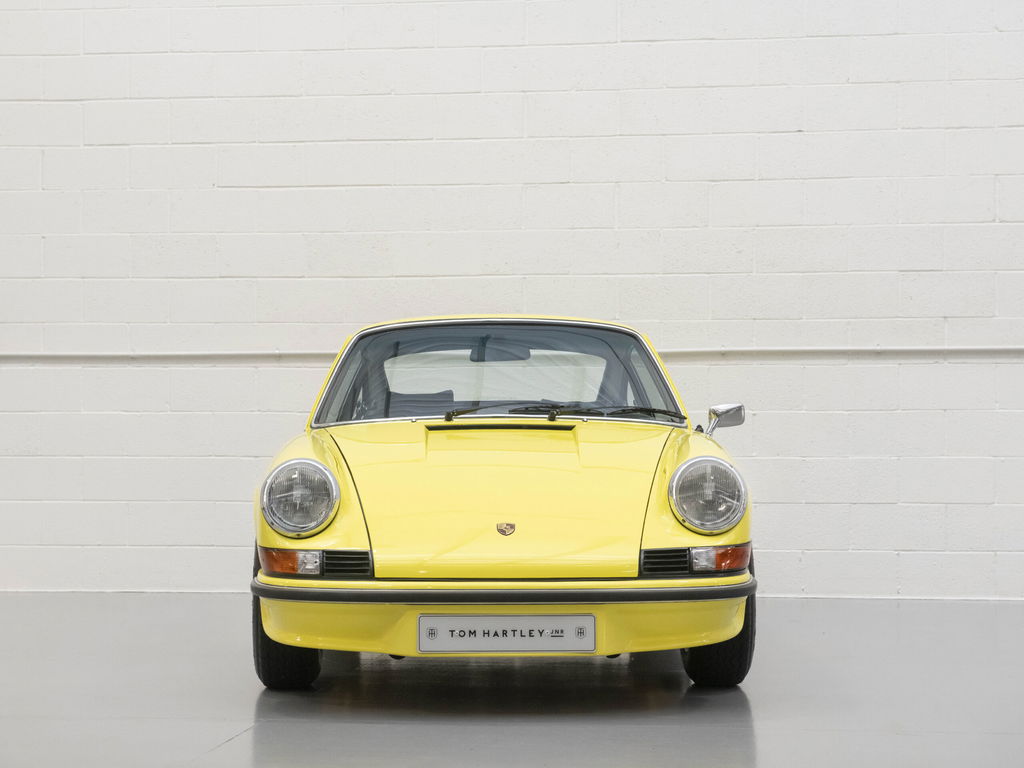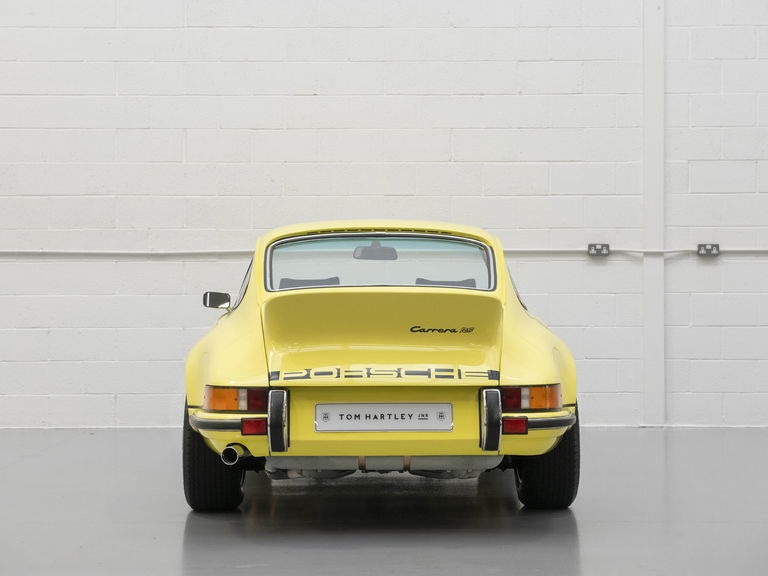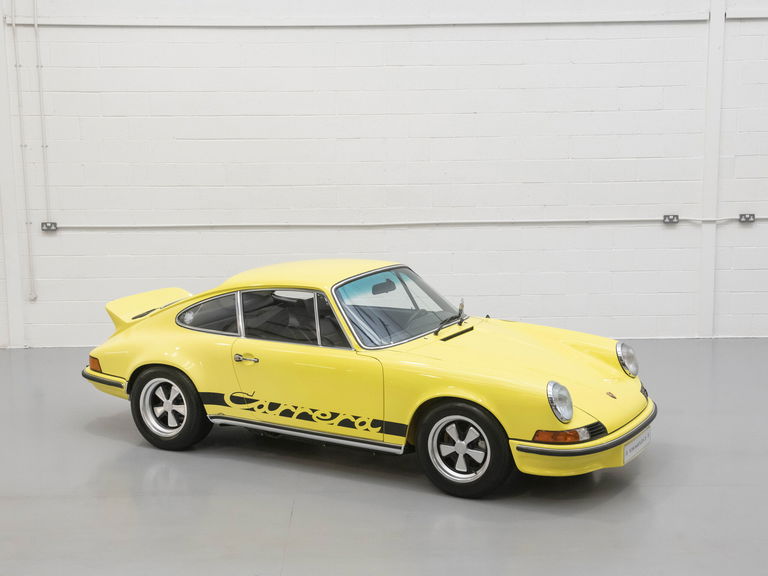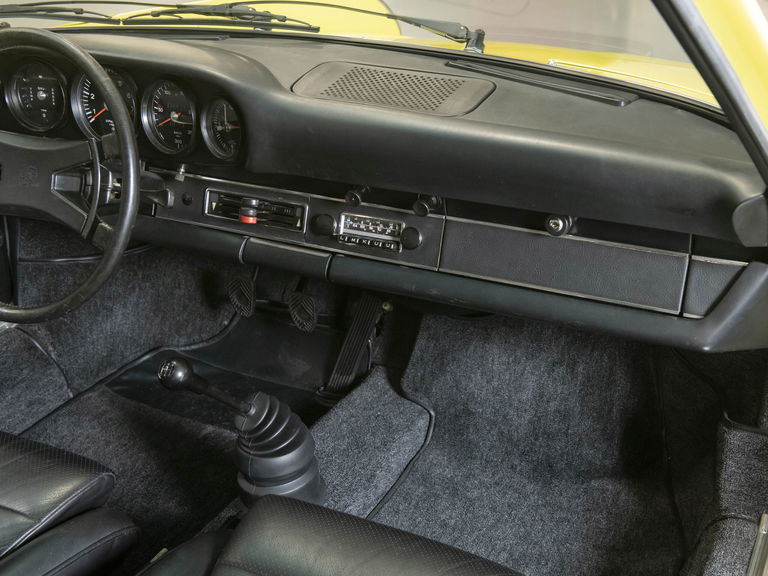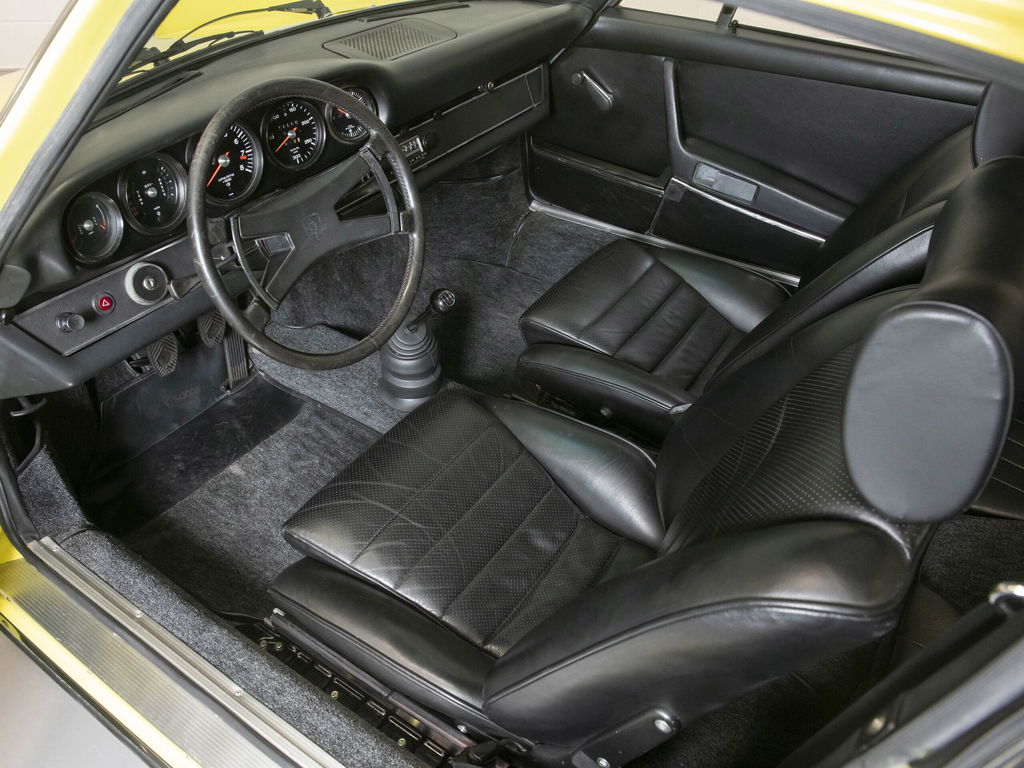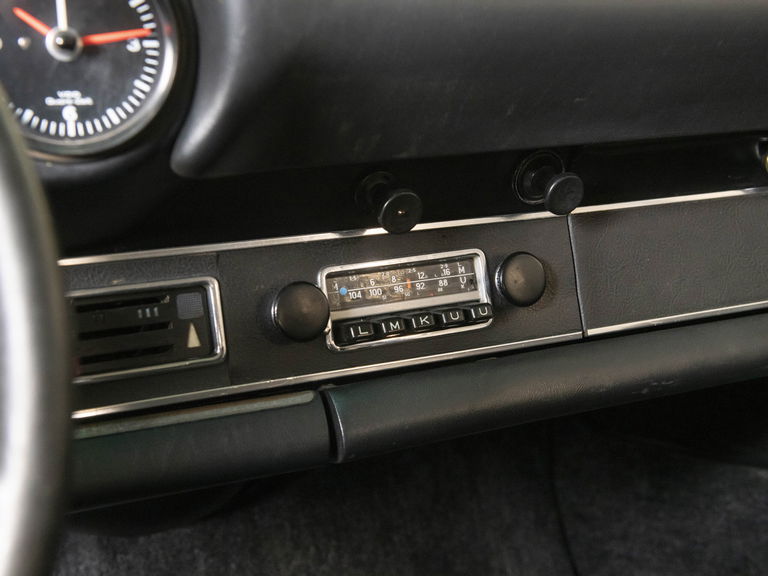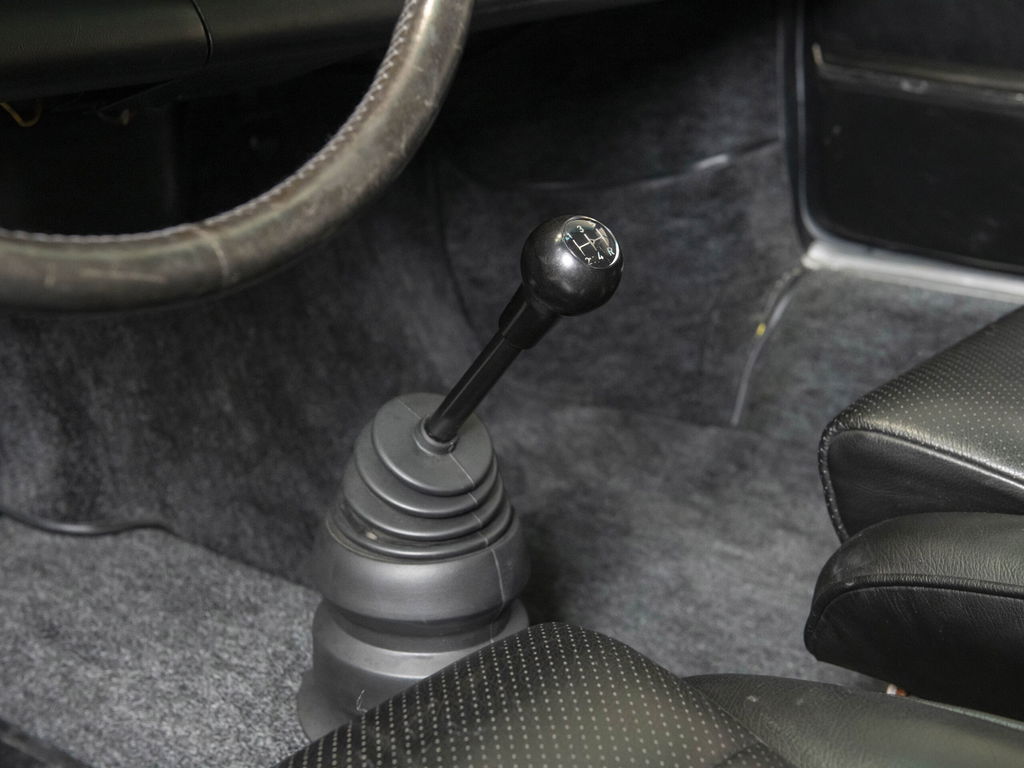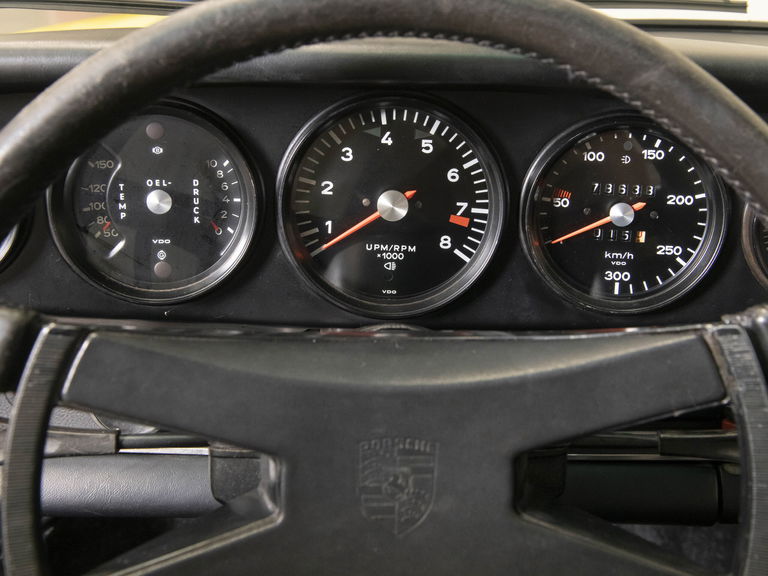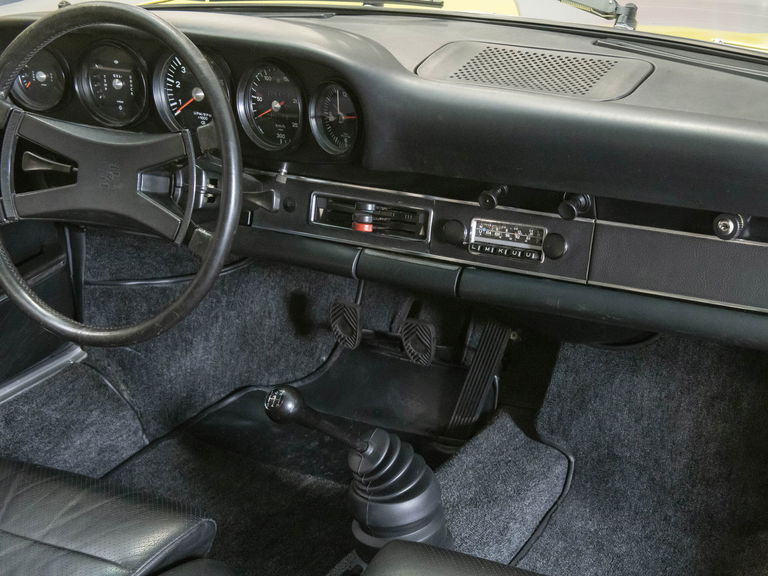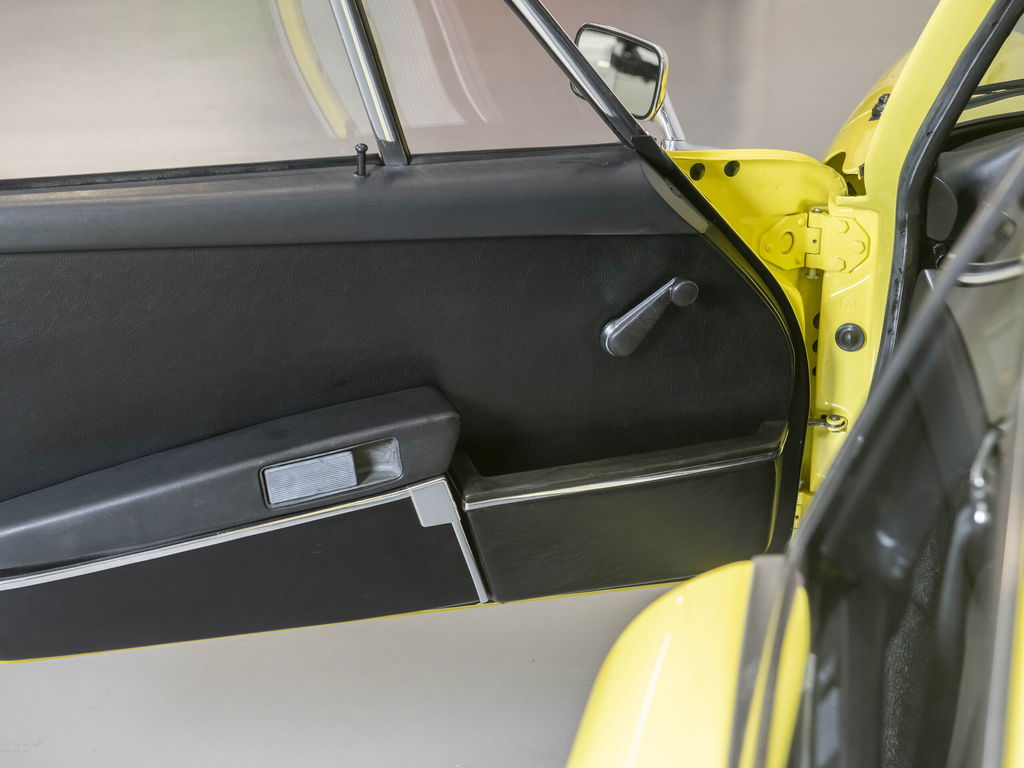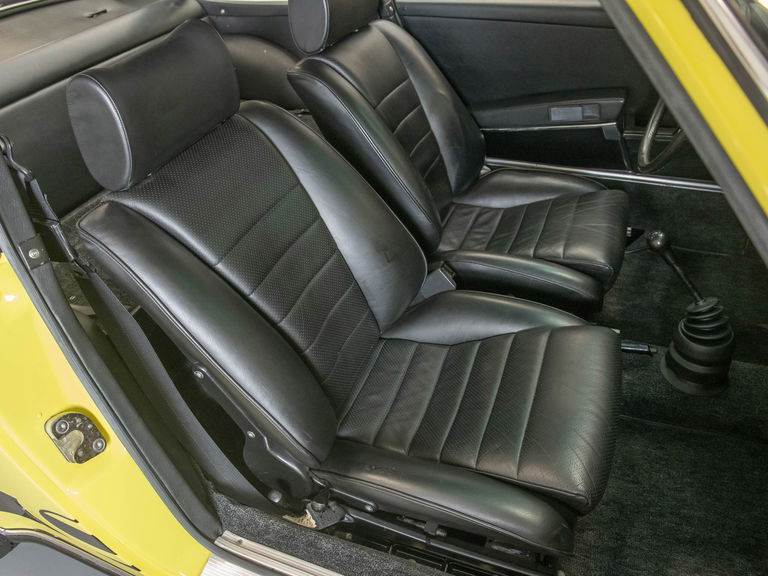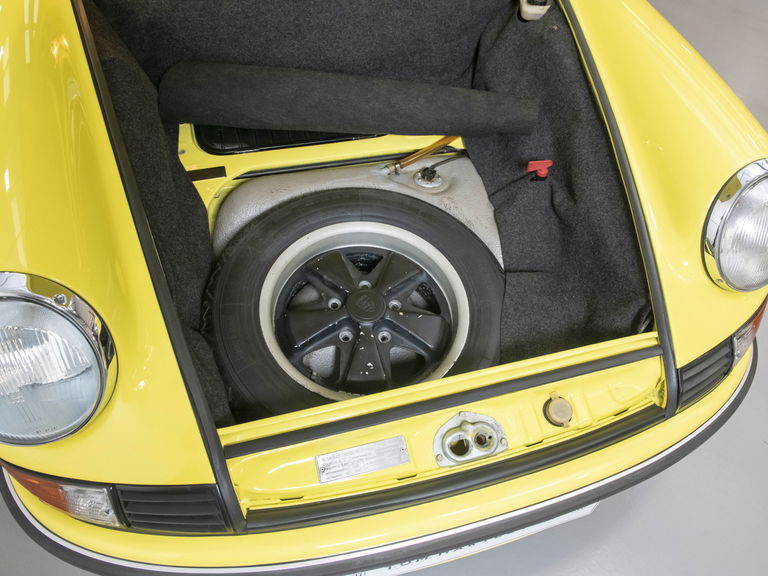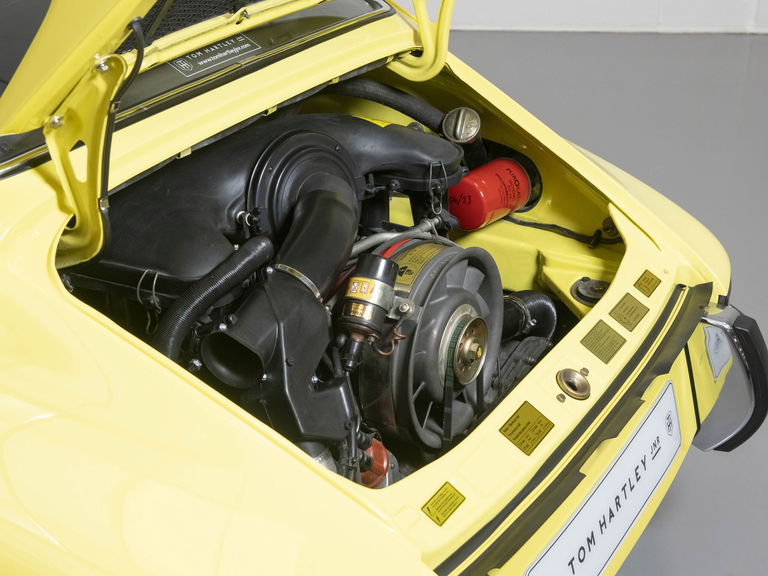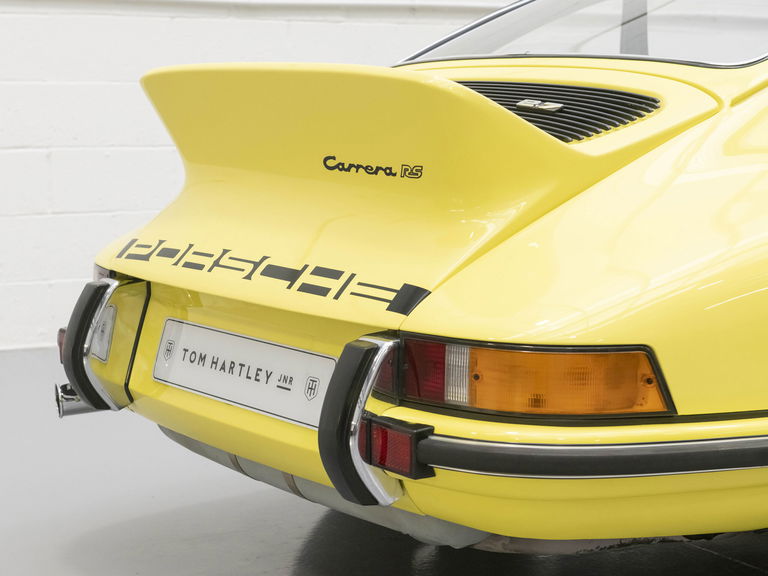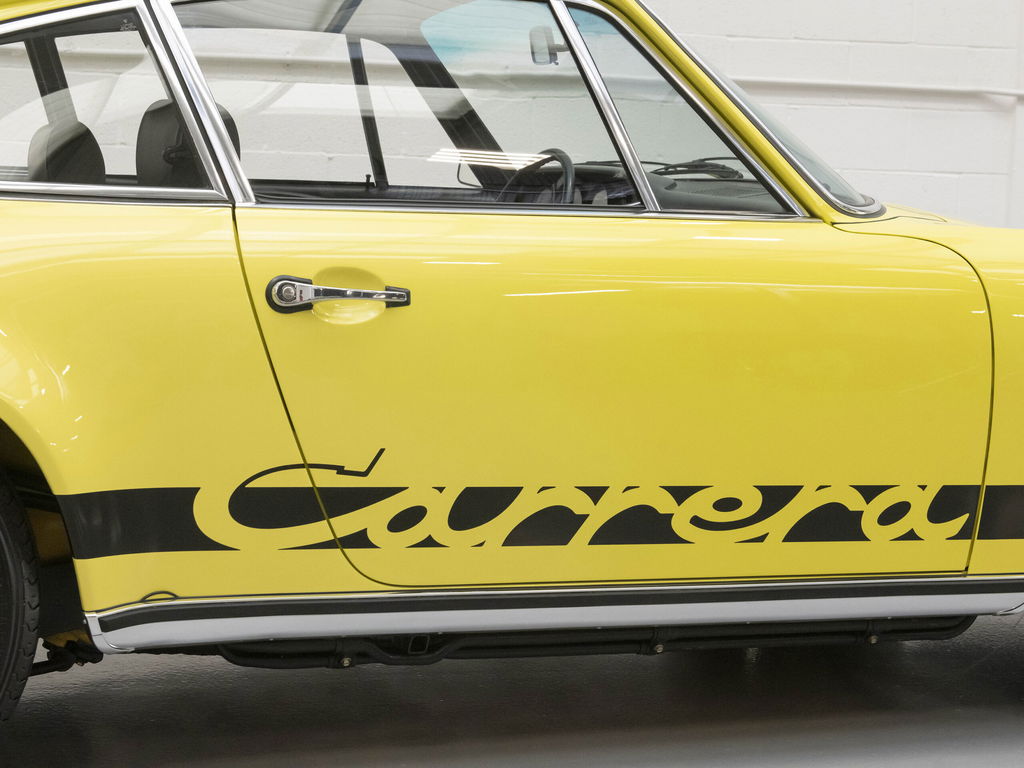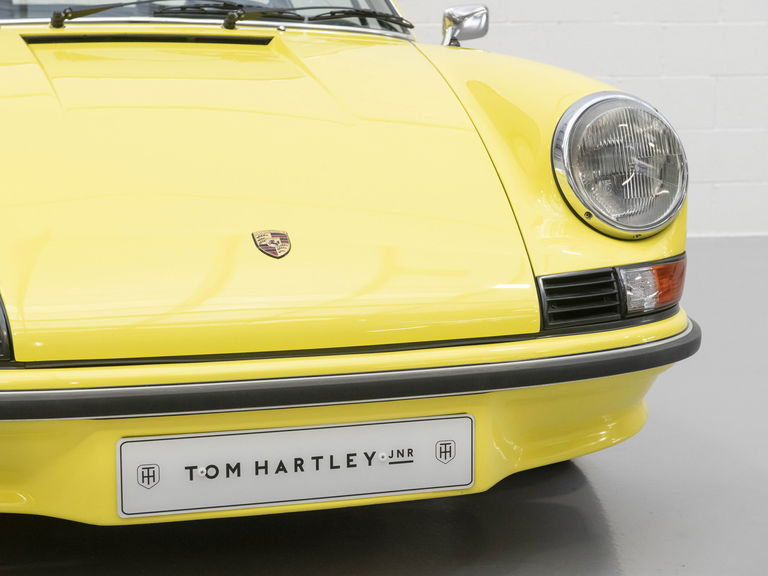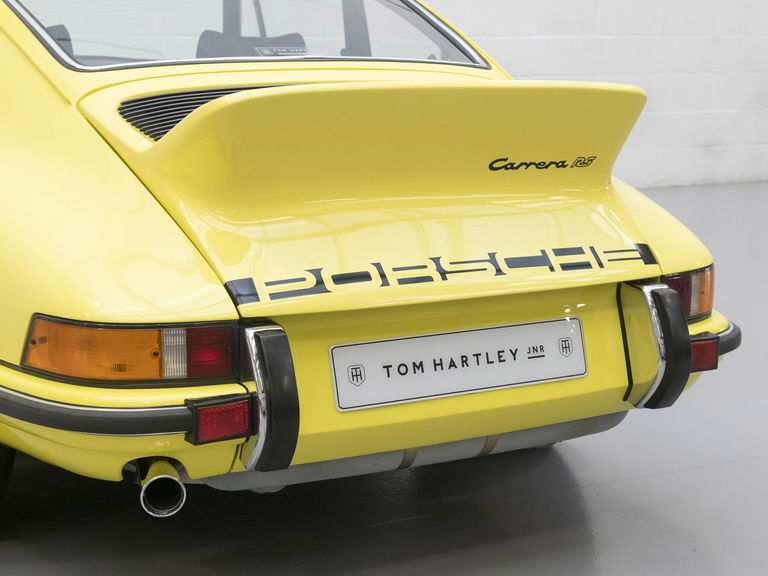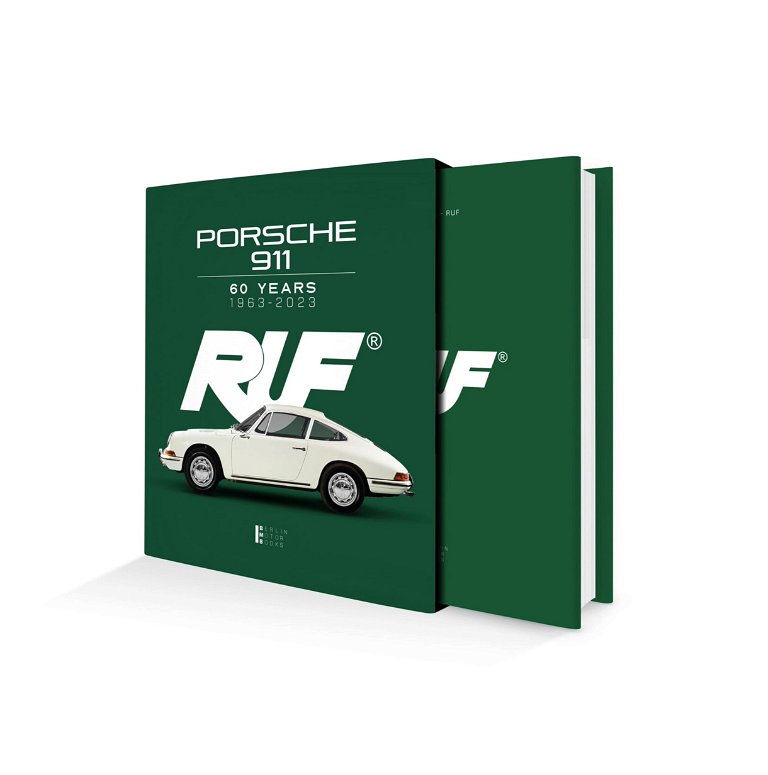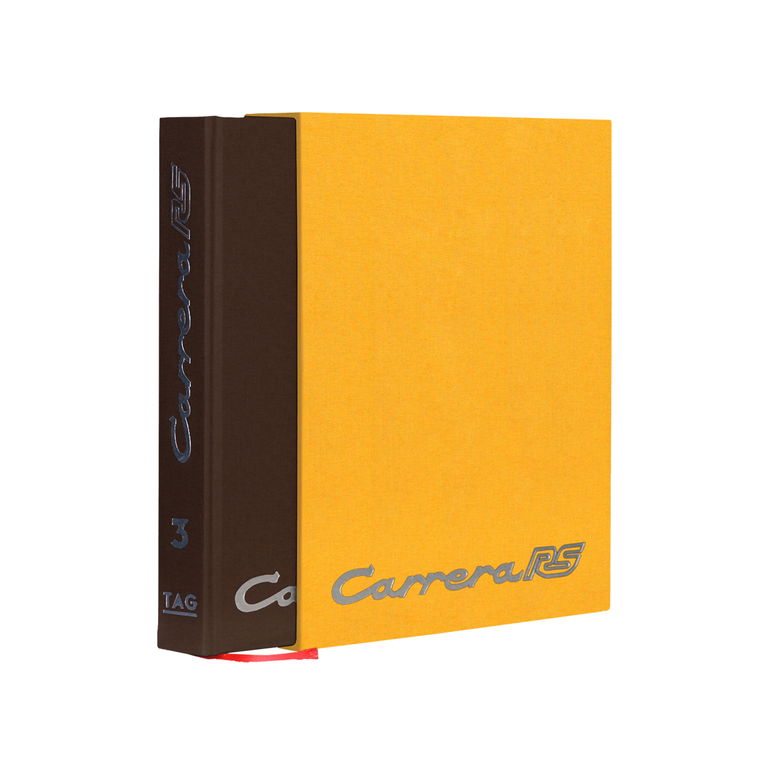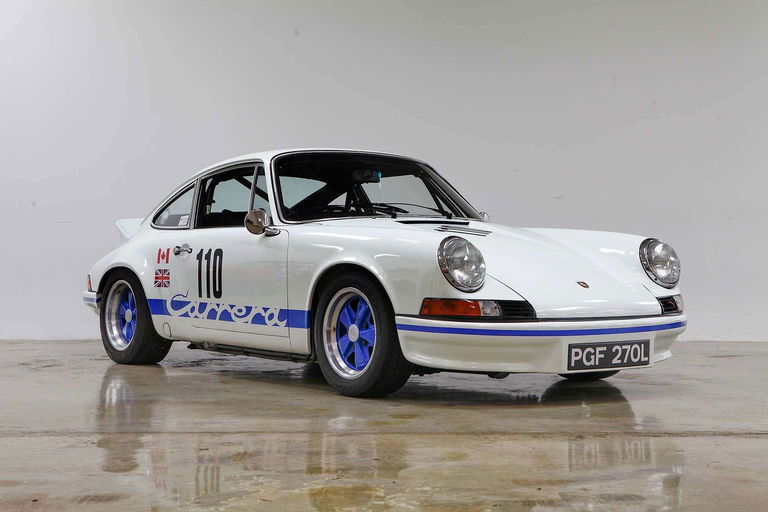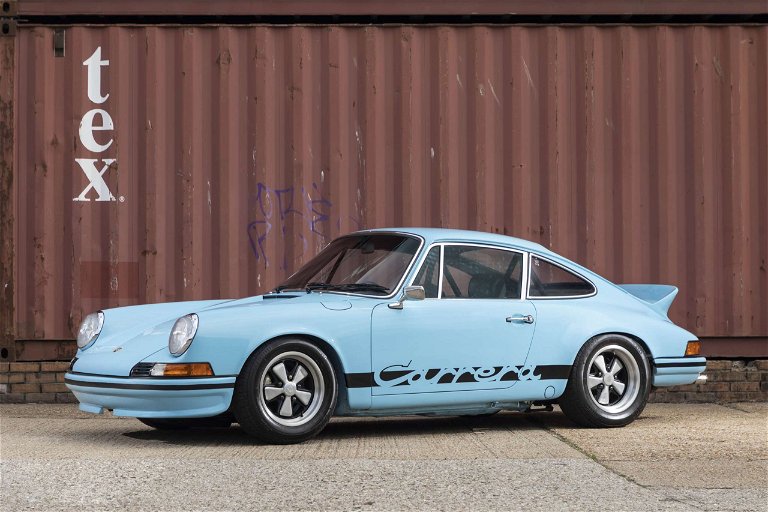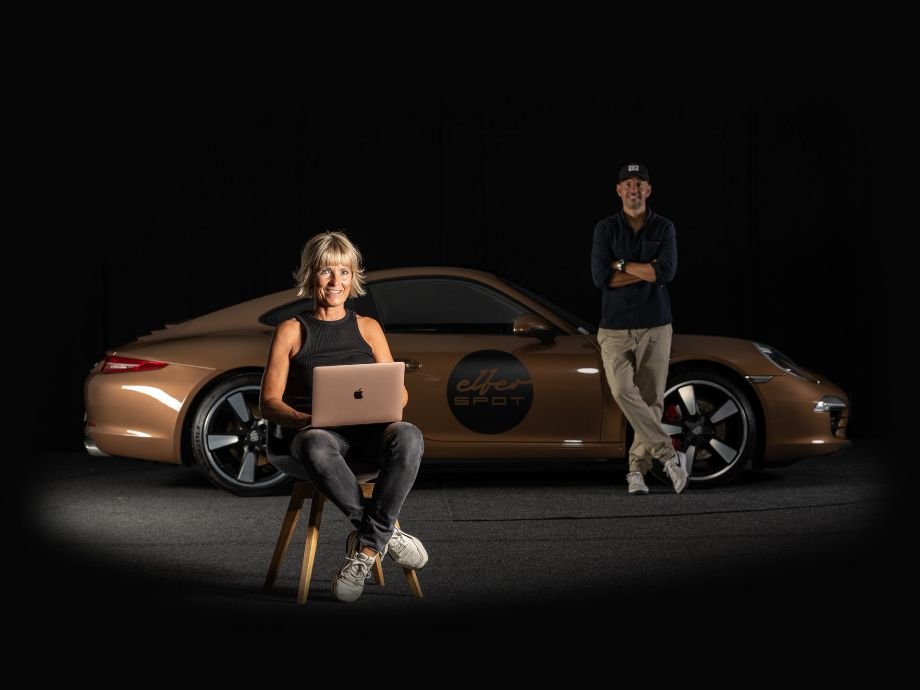The model
The duck tailed Carrera RS is one of the most iconic Porsche silhouettes. Born from the homologation requirements of Porsche’s racing ambitions in the early 1970s, the 911 Carrera RS has become one of Porsche’s most successful and desirable models.
In 1971 the FIA changed the regulations for Group 5 Sports Cars, limiting the engine capacity to 3.0-litres. This change in the rules forced Porsche to retire its successful 917 and review not only its racing strategy but also that of its production cars. In the space of just three months, however, Porsche engineers had found a solution to both. Focusing instead on Group 3 and Group 4 categories, they were able to use and develop their existing 911 model and turn it into both a competitive race car and also an incredibly popular production car.
Using the 911 S as a base, Porsche’s new model the “Carrera RS” featured numerous changes in an effort to reduce weight and add power. A 2.7-litre engine, which produced 210bhp at 6,300rpm, was placed in a 911 shell, which had widened rear quarter panels, a fibreglass front valance with a lip spoiler, an additional front oil cooler and had been modified to accept wider wheels and tyres. To reduce rear-end lift at higher speeds, a small “ducktail” spoiler was added to the engine cover. All of these adjustments resulted in a reduced weight of just 1,075 kilograms, contributing to a top speed of 150 mph and a 0–60 mph time of 5.5 seconds.
Homologation requirements stated that Porsche had to build 500 production cars in order to qualify for Group 4 and a further 500 to qualify for Group 3. Using the extremely lightweight 911 Carrera RS race model as a base, customers were presented with the option of either a Touring (M472) or a Sports (M471) variant with the Touring package being the most expensive. Despite initial doubts from Porsche’s marketing team, the 911 Carrera RS proved to be incredibly popular with the entire first production run of 500 cars selling out even before Porsche had exhibited at the 1972 Paris Auto Salon.
In total, 1,580 examples were built and sold, which was more than enough to qualify the model for racing. The appeal of the Porsche 911 2.7 RS has only continued to grow over time.
This car
Chassis 600955 was completed in March 1973 and it was finished in the striking colour of Light Yellow over a Black Leatherette interior with Houndstooth seat inserts. Light Yellow was the most popular colour at the time of production and it perfectly encapsulates the time in which the cars were built whilst also enhancing the iconic silhouette.
The car was built with the optional extras of sports seats, retractable belts, a retractable antenna and a loudspeaker. The car was destined for the Porsche dealer Gottfried Schultz in Lintorf and as a result was left unwaxed before delivery, as noted by its factory shipping code.
The car was first registered on the 13th May 1973 and would go on to be owned by a Mr Ferdinand Cebulla. Incidentally, Mr Cebulla had started his career with Gottfried Schultz in 1966 where he completed a mechanical apprenticeship. Porsche was always a passion for Mr Cebulla, both professionally as well as personally and he worked with the marque for over 40 years and also later owned a 964 Carrera RS.
In 1989 Mr Cebulla sold the car to Mr Reinhard Versteegen. Mr Versteegen comes from a family of insurers with offices all over Germany. At this time the car was in fair condition but it was in need of some refurbishment work and so Mr Versteegen decided to embark on a restoration including a repaint and interior retrim. The Houndstooth seat inserts were not included due to personal preference. Following the restoration, the car was showing 67,773 km on the clock.
The 2.7 RS remained with Mr Versteegen until 2013 when it was purchased by its most recent owner, an incredibly successful business leader who is certainly car collecting royalty and a good friend of our business. During his ownership it resided alongside some of the world’s finest cars and has been meticulously cared for throughout. The only reason this example is leaving the collection is due to an original paint super low mileage example being recently purchased.
Upon us acquiring the car, we immediately entrusted it to marque specialists Autofarm 1973 Ltd to prepare the car for sale. The engine has been serviced and all mechanical components have been checked and overhauled to ensure it is ‘on the button’.
The Porsche 2.7 RS Touring is a very special model. It boasts superb handling and performance and is one of the most iconic and sought-after cars of the 1970s. Chassis 600955 is a fantastic example that boasts full matching numbers and great originality. A number of important factory date stamps are evident on the car including ones on the instrument dials which are dated February and March 1973. It comes complete with a tool kit, jack and a dedicated history file.
Continue reading





